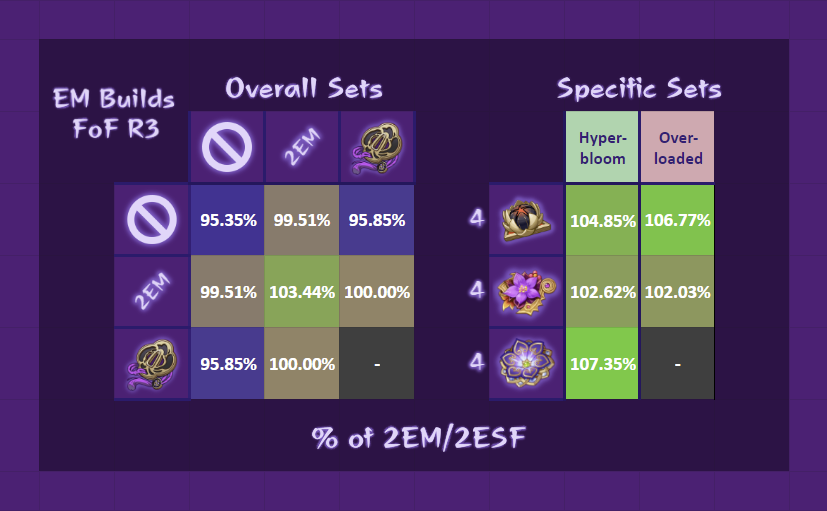Lisa build represents a groundbreaking approach within the construction industry, combining efficiency, sustainability, and cost-effectiveness. This methodology is transforming traditional building practices, emphasizing streamlined processes and innovative material use to meet modern demands. As developers and contractors alike seek smarter solutions, understanding lisa build in depth becomes essential to leverage its full potential in contemporary and future projects.
Lisa Build: A Comprehensive Guide to Understanding This Construction Methodology

Lisa build is a construction approach that integrates modular design, prefabrication, and sustainable practices into a cohesive process aimed at optimizing time, expense, and environmental impact. It originated from the need to address common industry challenges such as project delays, budget overruns, and inefficient resource utilization. By emphasizing off-site manufacturing and rapid assembly techniques, lisa build provides a flexible framework adaptable to various project types, from residential complexes to commercial developments.
In essence, lisa build involves designing components that are manufactured in controlled environments before being transported to the site for quick assembly. This method reduces onsite construction time significantly while maintaining high-quality standards. Additionally, the approach promotes a collaborative design process involving architects, engineers, and manufacturers from the outset, ensuring that all elements are tailored for maximum efficiency and durability. Its focus on innovative materials, sustainable practices, and process integration makes lisa build a comprehensive methodology poised to elevate the entire construction landscape.
Implementing lisa build requires an understanding of both its technical aspects and strategic advantages. It encourages early engagement with manufacturers, detailed planning, and the use of digital tools like Building Information Modeling (BIM). This proactive approach ensures that each module or component aligns perfectly with project specifications, reducing errors and wastage. Overall, lisa build not only offers a practical solution to common construction dilemmas but also reflects a paradigm shift towards smarter, greener, and more resilient structures.
The Advantages of Lisa Build: Exploring Cost-Effectiveness and Efficiency

One of the most compelling reasons to adopt lisa build is its remarkable cost-effectiveness. Traditional construction often involves unpredictable expenses stemming from delays, weather disruptions, and onsite labor inefficiencies. Lisa build mitigates these issues by prefabricating components in controlled settings, reducing labor costs and minimizing wastage. The streamlined process means projects can adhere more reliably to budgets and timelines, providing clients with clearer financial planning and faster returns on investments.
In addition to economic benefits, lisa build significantly enhances project efficiency. The modular nature allows for parallel work streams—design adjustments, manufacturing, and site preparations can occur simultaneously—accelerating overall project completion. This approach not only shortens construction timelines but also reduces the exposure to external risks such as market fluctuations or regulatory delays. For developers, this means quicker project turnover and earlier revenue realization, creating a competitive advantage in fast-paced markets.
Furthermore, lisa build fosters sustainability practices that offer long-term savings and environmental benefits. Using eco-friendly materials and reducing on-site waste contribute to greener footprints. The ability to reuse modules or components in future projects aligns with circular economy principles, lowering lifecycle costs and promoting corporate social responsibility. Overall, the combination of economic savings and sustainability positioning makes lisa build an attractive methodology for stakeholders committed to responsible growth and innovation.
Lisa Build vs. Traditional Construction: A Comparative Analysis

Comparing lisa build to conventional construction reveals significant differences that influence project outcomes, stakeholder satisfaction, and industry evolution. Traditional methods typically involve linear, onsite processes—design, procurement, construction—done sequentially, which often leads to delays, higher labor costs, and material waste. In this context, lisa build’s modular and off-site fabrication approach offers a revolutionary shift by enabling concurrent workflows and batch processing of components.
Another key distinction lies in quality control. In traditional projects, onsite work can be susceptible to weather conditions and labor variability, jeopardizing quality. Lisa build’s factory-controlled environment ensures precise manufacturing, resulting in higher consistency, uniformity, and adherence to standards. This shift also translates to reduced rework, safety risks, and overall project fragility, which are common pitfalls in conventional building projects.
From a project management perspective, lisa build provides better predictability and flexibility. The pre-fabrication process allows planners to anticipate costs and timelines with greater certainty. Also, the adaptability of modules facilitates future extensions or modifications without disturbing the core structure. While conventional building methods might struggle with mid-project changes, lisa build’s modularity offers scalable solutions, ultimately positioning it as a strategic choice for innovative, resilient, and cost-effective construction.
Case Studies: Successful Implementations of Lisa Build in Diverse Projects
Practical application of lisa build across different sectors showcases its versatility and potent impact on project delivery. In one urban residential development, a city reduced construction time by nearly 50% compared to traditional methods, achieving occupancy within record timeframes. The modular approach facilitated precise pre-fabrication of entire apartment units, which were assembled swiftly on-site, resulting in substantial savings and a seamless construction process.
In the commercial sector, a large office complex was constructed using lisa build principles, emphasizing energy efficiency and environmental sustainability. The project integrated solar panels, green roofs, and recycled materials into pre-manufactured modules, demonstrating how this methodology can support eco-conscious design objectives. The result was a modern, durable structure with reduced environmental footprint and lower operational costs, exemplifying lisa build’s capacity to merge innovation with sustainability.
Another compelling example involves a disaster relief shelter project, where rapid deployment was critical. Utilizing lisa build, the team manufactured shelters in advance and transported them to affected areas, enabling rapid assembly that saved lives and provided essential facilities swiftly. These diverse case studies underscore lisa build’s adaptability—whether for urban housing, sustainable commercial buildings, or emergency infrastructure, its successful deployment highlights its strategic value in addressing real-world challenges across industries and environments.
Lisa Build: Material Selection and Sustainable Practices
Material choice plays a vital role in optimizing the benefits of lisa build, where durability, sustainability, and cost are primary considerations. Prefabrication allows for the use of advanced, eco-friendly materials like cross-laminated timber (CLT), recycled steel, and high-performance insulation that might be challenging to work with onsite. These materials improve thermal efficiency, structural integrity, and aesthetic appeal while aligning with green building standards such as LEED.
Sustainable practices are at the core of lisa build, emphasizing minimal waste, energy efficiency, and resource conservation. The factory-controlled environment ensures optimal use of materials, reduces debris, and facilitates recycling and reuse. Additionally, modular design inherently supports flexible usage, allowing reassignment or repurposing of components in different projects, thus extending their lifecycle and minimizing environmental impact. This sustainability focus not only benefits the environment but also adds economic value through lower operational costs and better compliance with green regulations.
Furthermore, lisa build encourages innovation in material science, where researchers and manufacturers continuously develop new composite materials and smart technologies to enhance building performance. For instance, integrating sensors within modules for real-time energy management or using biodegradable elements support evolving environmental standards. Overall, sustainable material selection and practices within lisa build demonstrate a committed stride toward smarter, greener construction solutions that meet today’s urgent climate and resource challenges.
Lisa Build: Addressing Challenges and Mitigation Strategies
While lisa build offers numerous advantages, adopting this methodology involves certain challenges that must be proactively managed. One common issue is the need for precise synchronization between off-site manufacturing and on-site assembly, which can be complicated by logistical hurdles or disruptions in supply chains. To mitigate these risks, comprehensive planning, real-time coordination, and establishing reliable partnerships with manufacturers are essential, ensuring that schedules align and materials are delivered without delays.
Another challenge involves the regulatory environment, where building codes and standards might not yet fully accommodate modular or prefabricated structures. Navigating these legal frameworks requires collaboration with local authorities and proactive engagement to update or interpret regulations favorably. Developers and contractors should also invest in training and capacity-building to handle new construction techniques, minimizing errors and ensuring quality assurance across all phases.
Lastly, the integration of new technologies—such as BIM and automation—requires significant initial investment and technological expertise. Overcoming these barriers involves strategic planning, staff training, and phased implementation to gradually embed lisa build practices into existing workflows. By addressing technical, regulatory, and logistical hurdles with strategic mitigation, stakeholders can unlock the full potential of lisa build and accelerate industry transformation.
Implementing Lisa Build: A Step-by-Step Guide for Contractors
Implementing lisa build effectively demands a structured, well-informed approach. The first step involves comprehensive project planning, where stakeholders define goals, budget constraints, and timelines while assessing the scope for prefabrication. Early engagement with design teams, manufacturers, and suppliers is crucial to align expectations and facilitate a collaborative workflow that prioritizes modular thinking from the outset.
Next, the detailed design phase should leverage Building Information Modeling (BIM) to create precise digital representations of components and systems. This step ensures that all elements are optimized for manufacturing and assembly, reducing errors and facilitating cost control. Once designs are finalized, production schedules must be coordinated with logistical planning to ensure timely delivery of modules and materials, minimizing onsite downtime.
Finally, on-site assembly should follow standardized protocols, with clear safety and quality assurance measures in place. Employing skilled crews trained in modular construction techniques will ensure swift, accurate installation. Regular monitoring and quality checks during each phase of assembly are critical to uphold standards and address issues promptly. Implementing lisa build with a disciplined methodology and integrated team effort results in reduced construction time, lower costs, and superior quality.
The Future of Construction: How Lisa Build is Shaping the Industry
As the construction industry navigates the twin pressures of increasing urbanization and environmental concern, lisa build is emerging as a transformative force that redefines traditional paradigms. Its scalable, efficient, and sustainable nature aligns perfectly with the future needs for rapid development and ecological responsibility. Adoption of digital tools like BIM, combined with innovative manufacturing processes, positions lisa build at the forefront of next-generation construction practices.
Furthermore, technological advancements such as automation, robotics, and smart sensors are poised to integrate seamlessly with lisa build methodologies, enabling higher levels of precision, safety, and automation. These innovations promise to further reduce costs and project durations, making construction more accessible and resilient. The industry’s shift towards green building certifications and eco-conscious design also favors lisa build, encouraging more projects to adopt sustainable modules as standard practice.
Looking ahead, regulatory frameworks and industry standards will continue evolving to accommodate modular construction, emphasizing quality, safety, and environmental impact. As more developers recognize the long-term savings and unique value propositions of lisa build, widespread adoption is inevitable, ultimately fostering an industry that is more connected, innovative, and committed to sustainable development—a true revolution driven by smarter construction methodologies.
Expert Opinions: Perspectives on the Benefits and Limitations of Lisa Build
Experts across architecture, engineering, and construction fields generally view lisa build as a promising approach that addresses many traditional industry issues. Many highlight its efficiency in reducing construction timelines and improving quality control through factory-based manufacturing. Industry leaders also applaud its sustainability aspects, noting that optimized material use and modular assembly contribute significantly to reducing environmental footprints.
However, some professionals point out limitations and areas requiring further development. Concerns regarding regulatory hurdles, the need for specialized skills, and the initial investment costs are recurring themes. Critics argue that without comprehensive standardization and industry-wide acceptance, implementing lisa build at scale may face resistance or operational challenges, especially in regions with restrictive building codes or fragmented supply chains.
Still, most experts agree that ongoing technological advancements, increased industry collaboration, and supportive policy frameworks will help mitigate these limitations. As the methodology matures, it is likely to become a vital component of modern construction practices, particularly for projects demanding speed, flexibility, and sustainability. The evolving expert consensus underscores lisa build’s potential to reshape the future while acknowledging the work needed to overcome its current challenges.
Lisa Build: Best Practices for Quality Assurance and Project Management
Achieving excellence in lisa build requires rigorous quality assurance protocols and a well-structured project management strategy. From design inception to final assembly, establishing clear standards and continuous monitoring ensures that each module meets safety, durability, and aesthetic criteria. Integrating digital tracking tools and automated inspections can streamline quality checks, reduce human error, and facilitate transparent communication among all stakeholders.
Effective project management in lisa build emphasizes collaboration, contingency planning, and flexible scheduling. Leveraging advanced project management software allows teams to simulate scenarios, optimize resource allocation, and adapt to unforeseen disruptions promptly. Regular stakeholder meetings and real-time progress updates build trust and maintain alignment throughout the project’s lifecycle, minimizing delays and misunderstandings.
Lastly, cultivating a culture of innovation and continuous improvement fosters higher standards and encourages feedback that can refine processes further. Training programs focused on modular construction techniques and quality control procedures are essential for maintaining workforce competency. By combining disciplined project management with a proactive quality assurance framework, contractors can maximize the benefits of lisa build, delivering high-quality, sustainable structures efficiently and reliably.
## Conclusion
In summary, lisa build is revolutionizing the construction industry through its innovative, sustainable, and cost-effective approach — emphasizing modular design, prefabrication, and streamlined workflows. Its advantages include faster project delivery, higher quality control, environmental benefits, and adaptability to diverse project types. While challenges such as regulatory barriers and logistical complexities exist, strategic mitigation strategies and technological advancements promise to unlock its full potential. As industry stakeholders increasingly recognize these benefits, lisa build will continue shaping the future landscape of construction, fostering smarter, greener, and more resilient structures worldwide.



Leave a reply